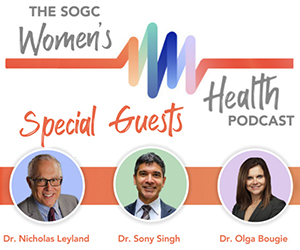Healthy eating
What does “eating healthy” really mean?
This topic has been subject to a lot of debate over the past few decades. There has been a great deal of conflicting information about nutrition in the media and on the Internet. Which fats are good or bad? Which nutrients should be supplemented? How does food processing affect the food we eat? While some of the specifics of these questions remain unanswered, a general pattern of eating is scientifically proven to be related to the lowest risk of developing chronic diseases (e.g., diabetes and heart disease). Throughout their lifecycle, women can improve their health by consuming a balanced and varied diet that has:
|
MORE |
| vegetables and fruit whole grains seafood legumes nuts low-fat dairy |
|
LESS |
| refined grains sugar and sugar- sweetened beverages red and processed meats |
This eating pattern is consistent with the recommendations made in Canada’s Food Guide for Healthy Eating. If you follow Canada’s Food Guide and take a daily prenatal vitamin, you will get all the nutrients your body needs to support a healthy pregnancy.
What can I eat to improve my chances of getting pregnant?
There are many websites that recommend a particular dietary regimen to help you get pregnant. It may surprise you that in fact no specific ‘fertility diet’ has been scientifically proven to increase fertility. However, there is a so called ‘dietary pattern’ that is associated with a greater chance of achieving pregnancy. The characteristics of this pattern of eating include:
- Less trans fats
- Less animal protein
- More fibre
- More high-fat dairy
- More iron coming from non-meat sources
- Multivitamin and iron supplementation
Not surprisingly, these characteristics tend to be the same as what is considered a generally healthful dietary pattern, as listed above.


